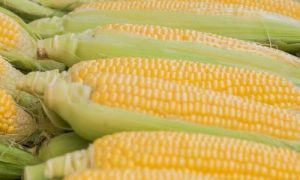Agriculture Dept plans to impose curbs on spring maize in Punjab

In response to alarming groundwater depletion due to spring maize cultivation, Punjab’s Agriculture Department plans stringent measures. Director Jaswant Singh highlights the urgency, urging government action. With 20 out of 23 districts facing water stress, the impact is dire. PAU warns of spring maize’s high water demand, exacerbating the crisis. Profitability drives its popularity, but it leads to wheat residue burning, worsening pollution. Action is imminent to safeguard water resources and the environment.
In a decisive move aimed at checking the overexploitation of underground water resources, the Agriculture Department has planned to introduce stringent curbs on the cultivation of spring maize. The development comes after reports attributed alarming decline in groundwater levels to the increasing trend of spring and summer maize cultivation.
Director of Agriculture Jaswant Singh voiced his concern over the rapid expansion of summer maize farming that starts during March and April, and it’s detrimental impact on groundwater reserves. “We have brought this critical issue to the government’s attention,” he said.
“A meeting will be held shortly to address this matter. We have sought detailed data from the PAU, Ludhiana, and the department to highlight the impact of the current cropping patterns. We had proposed implementing stringent actions, including advancing and regulating the sowing times for maize. The current pace of summer maize cultivation threatens to have catastrophic consequences on our underground water resources.”
He said: “Over the past few years, maize has been cultivated primarily for silage that is a superfood for cattle and poultry. This fodder is in high demand, and supplied to Gujarat, Rajasthan, Ladakh, J&K and HP.”
Agriculture experts within the department have indicated that the new cropping pattern, which begins in March-April, has significantly accelerated the depletion of subsoil water. With 20 out of 23 districts in Punjab facing water-stressed conditions, the urgency of the situation cannot be overstated.
Currently, over 1.46 lakh hectares in the state are under spring and summer maize cultivation, compared to just 90,000 hectares for Kharif maize, which requires significantly four irrigation cycles. PAU’s Principal Maize Breeder, Surinder Kaur Sandhu, highlighted the alarming emergence of a new cropping pattern. “Spring maize is even more water-intensive than paddy,” Sandhu noted. “It requires over 18 irrigation cycles due to high evaporation levels during the dry months, making it more harmful than paddy.”
The popularity of spring maize has surged in the past 4-5 years, driven by rising demand for cattle feed and favourable market prices. Farmers receive between Rs 2200 to Rs 2300 per quintal for maize, slightly above the minimum support price (MSP) of Rs 2090 per quintal.
An agriculture department official requesting anonymity revealed that farmers previously engaged in potato and pea cultivation were cultivating spring maize for its profitability. But the high profit has attracted wheat growers. This shift has led to an increase in wheat residue burning incidents, with over 11,000 cases reported this season, contributing to environmental pollution.
Source Link : https://www.tribuneindia.com/news/punjab/agri-dept-plans-to-impose-curbs-on-spring-maize-in-punjab-629882















